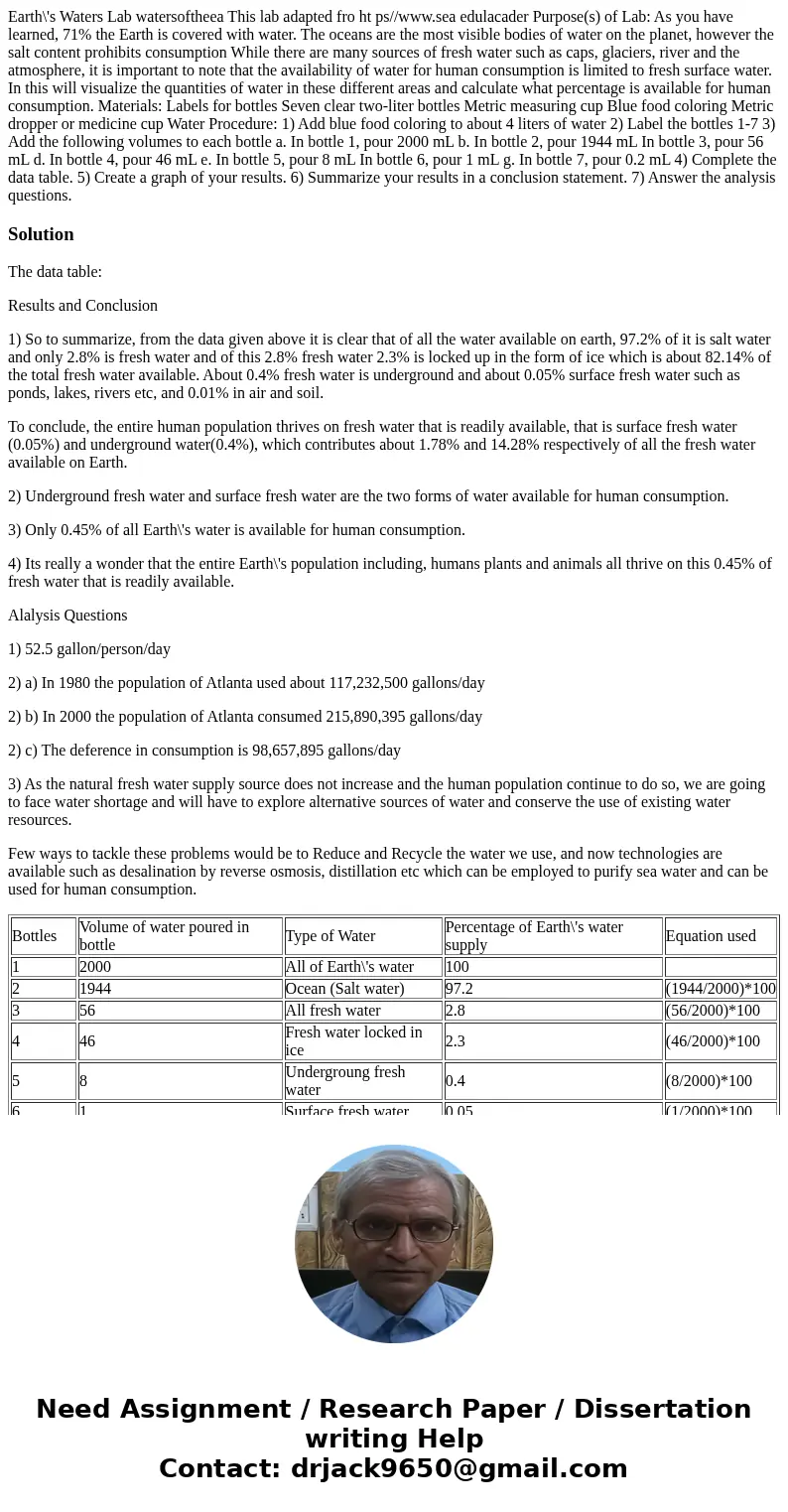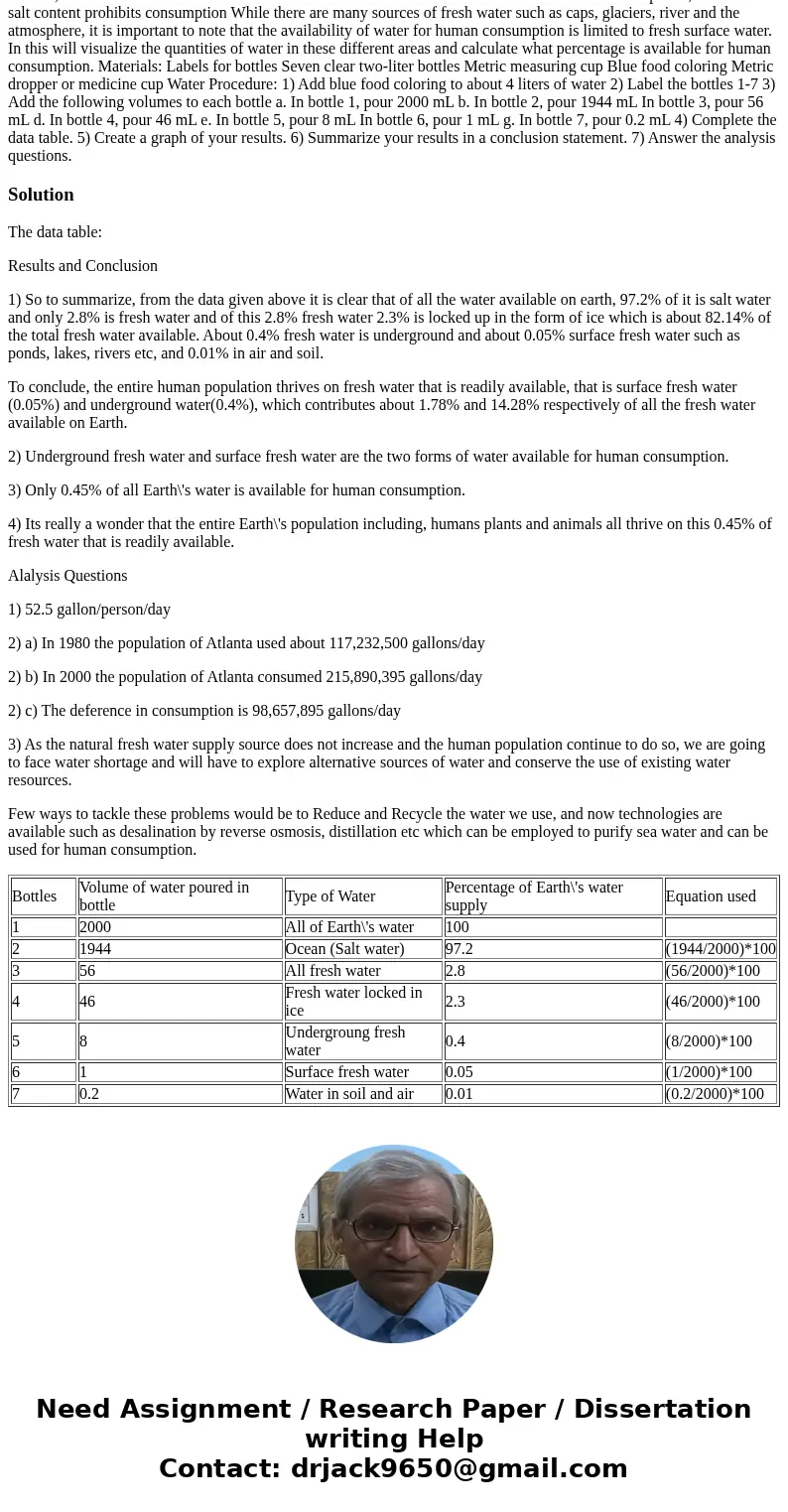Earths Waters Lab watersoftheea This lab adapted fro ht psww
Solution
The data table:
Results and Conclusion
1) So to summarize, from the data given above it is clear that of all the water available on earth, 97.2% of it is salt water and only 2.8% is fresh water and of this 2.8% fresh water 2.3% is locked up in the form of ice which is about 82.14% of the total fresh water available. About 0.4% fresh water is underground and about 0.05% surface fresh water such as ponds, lakes, rivers etc, and 0.01% in air and soil.
To conclude, the entire human population thrives on fresh water that is readily available, that is surface fresh water (0.05%) and underground water(0.4%), which contributes about 1.78% and 14.28% respectively of all the fresh water available on Earth.
2) Underground fresh water and surface fresh water are the two forms of water available for human consumption.
3) Only 0.45% of all Earth\'s water is available for human consumption.
4) Its really a wonder that the entire Earth\'s population including, humans plants and animals all thrive on this 0.45% of fresh water that is readily available.
Alalysis Questions
1) 52.5 gallon/person/day
2) a) In 1980 the population of Atlanta used about 117,232,500 gallons/day
2) b) In 2000 the population of Atlanta consumed 215,890,395 gallons/day
2) c) The deference in consumption is 98,657,895 gallons/day
3) As the natural fresh water supply source does not increase and the human population continue to do so, we are going to face water shortage and will have to explore alternative sources of water and conserve the use of existing water resources.
Few ways to tackle these problems would be to Reduce and Recycle the water we use, and now technologies are available such as desalination by reverse osmosis, distillation etc which can be employed to purify sea water and can be used for human consumption.
| Bottles | Volume of water poured in bottle | Type of Water | Percentage of Earth\'s water supply | Equation used |
| 1 | 2000 | All of Earth\'s water | 100 | |
| 2 | 1944 | Ocean (Salt water) | 97.2 | (1944/2000)*100 |
| 3 | 56 | All fresh water | 2.8 | (56/2000)*100 |
| 4 | 46 | Fresh water locked in ice | 2.3 | (46/2000)*100 |
| 5 | 8 | Undergroung fresh water | 0.4 | (8/2000)*100 |
| 6 | 1 | Surface fresh water | 0.05 | (1/2000)*100 |
| 7 | 0.2 | Water in soil and air | 0.01 | (0.2/2000)*100 |


 Homework Sourse
Homework Sourse